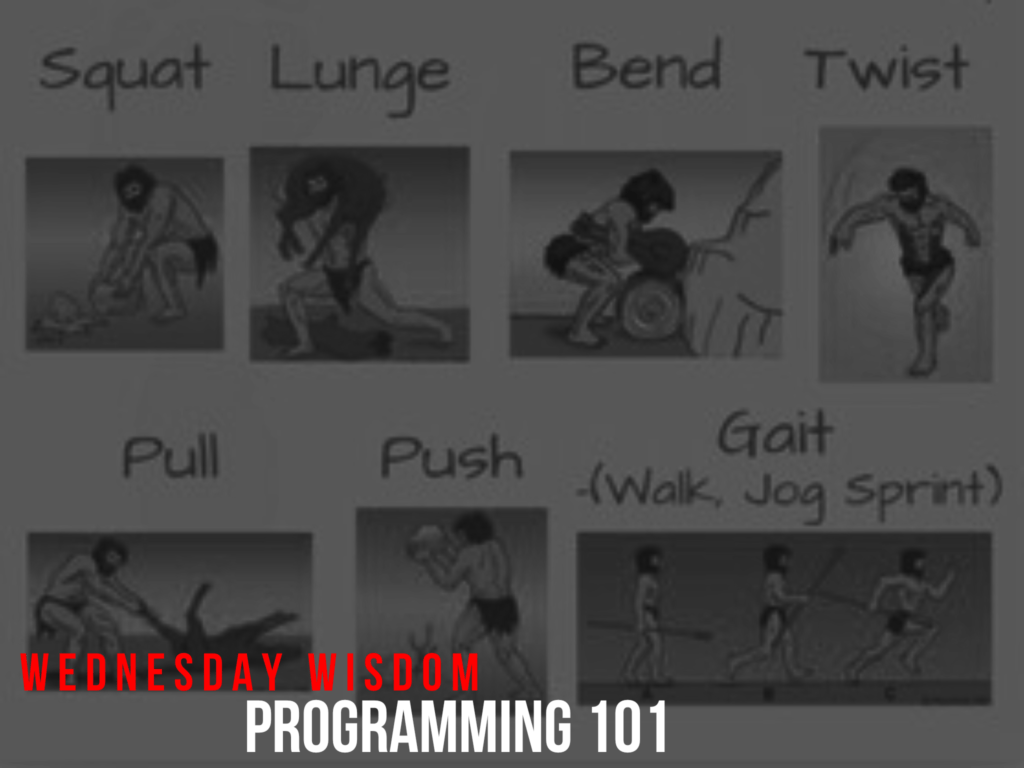We are all PT’s who promote and practice, or are at least educated in some form of ‘Functional Fitness’, but when it comes to program design and coaching our clients what does it take to ensure we are living by the philosophies of “Functional Training”?
To me, the concept of functional training means we’re training to improve our function in everyday activity and life. It encompasses having mobility, coordination, strength and fitness, all while having an injury and pain free body that grants us freedom to move however we want and participate in whatever activities we want every day.
This training philosophy has erupted over the past decade, and as functional-focused coaches our understanding of movement has hugely evolved from the traditional resistance and cardio training styles that dominated the fitness world in the 90’s and 00’s. So it’s essential our programming knowledge and structure also evolves to align with functional training concepts so we can achieve that strong, free, mobile body we strive for and of course get the best results for our clients too
There is a simple system you can use to ensure all of your programs are functional and balanced – this is the framework I use in every session I design.
—————————————————————–
There are two key concepts that make up this system:
The 7 Primal Movement Patterns (established by Paul Chek)
These movements mesh together to form the activities and exercises we perform everyday – to achieve optimal body balance and strength its essential we can complete all of these freely:
- Squat
- Lunge
- Push (horizontal and vertical)
- Pull (horizontal and vertical)
- Bend / Hinge
- Twist (rotate)
- Gait (step, walk, run)
The 3 Planes of Motion
We learn about these in early stages of personal training education. And to be completely honest, back when I completed my cert 3 & 4 I initially wondered why I would ever need to remember which is which, but now as a functional coach these planes are prominent in my mind everyday!
- Sagittal Plane
- Frontal (Coronal) Plane
- Transverse Plane.
—————————————————————–
To create a balanced and functional program it is key to include everything listed above – all 7 movement patterns and all 3 planes of motion.
Why?
So that we are strong and free to move in every pattern and in every plane in everyday life!
Traditional strength coaches will almost always include the first 5 primal movement patterns listed, but rotation and gait are often left out and a large proportion of exercises used are all performed in the sagittal plane.
As functional coaches it can get a little overwhelming to program, simply because the variety and combination of movements feels endless! And it’s really easy to fall into a bit of a rut using the same exercises and combinations day in and day out because they are front of mind.
Creative and balance functional program design can be SO easy when you apply this rule:
**Ensure every movement pattern and all 3 planes of motion are incorporated into every workout **
—————————————————————–
Some challenges you may have with this framework:
- What do we do with split programs (ie. programs where we are training legs one day, chest or back another etc.)?
It’s up to you whether you ensure you incorporate all the movement patterns into every single workout, or if you choose to just ensure they are incorporated across all your workouts to make up your complete program.
For me personally, I like to do every movement pattern every session in one way or another, but it doesn’t mean you can’t have a split-focus program. For example, on a leg-dominant day, I might include a Lunge & Press or complete an isometric Squat Hold while completing a Band Row at the same time – the push and pull resistance is not necessarily super heavy, but the movement pattern is still there.
- How do we work in the less common bits – gait, rotate, frontal plane and transverse plane?
Incorporating rotation immediately means you have included that transverse plane (in fact, rotation is SUCH an important movement on it’s own there will actually be a whole Wednesday Wisdom post on this next week, so stay tuned). And a quick tip to add gait and frontal plane into a workout – add a lateral step to any movement! For example, a KB Rack Squat with Lateral Step (take a side step at the top of each squat), or a KB Overhead Press with Lateral Step (hold the KB in rack during the step or take it up a notch by stepping while holding the KB in lockout at the top of the press).
—————————————————————–
Once you start using this framework programming cane become almost effortless – just work your way through and tick each movement and plane box as you go!
So go back and check out a few of your recent client programs…
are there any patterns or planes you tend to overlook? And where could you make adjustments to add those forgotten planes and patterns in?
For for Newsletter

